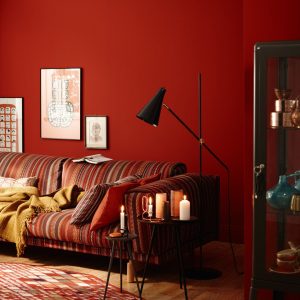Chandeliers have long been regarded as symbols of elegance and sophistication, transcending mere functionality to become true works of art. Originating in the medieval period, these ornate lighting fixtures were initially crafted from wood and iron, adorned with candles that flickered to life in grand halls and cathedrals. Over the centuries, chandeliers evolved into intricate designs made from crystal, glass, and metal, reflecting the opulence of the times.
Today, they continue to serve as a focal point in various settings, from luxurious ballrooms to cozy dining rooms, embodying a blend of history, craftsmanship, and modern aesthetics. Their ability to transform a space is unparalleled, making them a timeless statement piece that captures attention and admiration. The allure of chandeliers lies not only in their visual appeal but also in their capacity to evoke emotions and set the mood within a room.
A well-placed chandelier can create an atmosphere of warmth and intimacy, while a grand, multi-tiered design can instill a sense of grandeur and celebration. As interior design trends evolve, chandeliers have adapted to fit contemporary styles, offering a wide range of options that cater to diverse tastes. From minimalist designs that embrace simplicity to extravagant pieces that dazzle with crystals and intricate detailing, chandeliers remain a versatile choice for homeowners and designers alike.
Their enduring popularity is a testament to their ability to enhance any environment, making them an essential element in the world of interior design.
Choosing the Right Chandelier for Your Space
Choosing the Right Size for Your Chandelier
Selecting the perfect chandelier for your space involves careful consideration of various factors, including size, style, and function. The first step is to assess the dimensions of the room where the chandelier will be installed. A common guideline is to add the length and width of the room in feet and convert that total into inches; this number will give you an approximate diameter for the chandelier. For instance, if your dining room measures 12 feet by 15 feet, a chandelier with a diameter of around 27 inches would be appropriate.
Considering Ceiling Height and Room Style
However, it’s essential to consider ceiling height as well; higher ceilings can accommodate larger fixtures without overwhelming the space, while lower ceilings may require more compact designs. In addition to size, the style of the chandelier should harmonize with the overall decor of the room. Whether your home features traditional, modern, or eclectic design elements, there is a chandelier that can complement your aesthetic.
Functionality and Aesthetic Appeal
For instance, a classic crystal chandelier may be ideal for a formal dining room adorned with rich fabrics and antique furniture, while a sleek metal fixture with geometric shapes could enhance a contemporary kitchen or living area. Furthermore, consider the function of the chandelier; if it will serve as the primary light source, opt for one that provides ample illumination without being overly harsh. Conversely, if it’s meant to be more decorative than functional, you might choose a design that prioritizes visual impact over brightness.
How to Incorporate Chandeliers in Different Rooms
Chandeliers can be seamlessly integrated into various rooms throughout your home, each serving a unique purpose while enhancing the overall ambiance. In dining rooms, for example, chandeliers are often hung above the table to create an inviting atmosphere for meals and gatherings. The soft glow of light can encourage conversation and connection among family and friends.
When selecting a chandelier for this space, consider its height; it should be positioned approximately 30 to 36 inches above the table to ensure adequate lighting without obstructing views across the table. Additionally, choosing a design that complements your dining room’s color palette and furnishings will create a cohesive look. Beyond dining rooms, chandeliers can also elevate the aesthetic of living rooms and bedrooms.
In living areas, they can serve as stunning focal points that draw the eye upward, especially in rooms with high ceilings. A large chandelier can add drama and sophistication while providing ambient lighting for relaxation or entertaining guests. In bedrooms, smaller chandeliers can create a romantic and cozy atmosphere when placed above nightstands or centered over the bed.
The key is to select designs that resonate with the room’s theme; for instance, a vintage-inspired chandelier may enhance a rustic bedroom, while a modern fixture could suit a minimalist space perfectly. By thoughtfully incorporating chandeliers into different rooms, you can create a harmonious flow throughout your home.
The Impact of Chandeliers on Interior Design
The presence of chandeliers in interior design extends far beyond mere illumination; they play a pivotal role in shaping the character and mood of a space. A well-chosen chandelier can serve as an artistic centerpiece that reflects personal style and taste while also enhancing architectural features within a room. For instance, in homes with ornate moldings or high ceilings, a grand chandelier can accentuate these elements, drawing attention to their beauty and craftsmanship.
Conversely, in more understated spaces, a minimalist chandelier can provide an elegant touch without overwhelming the existing decor. Moreover, chandeliers have the power to influence how we perceive space itself. A strategically placed chandelier can create an illusion of height in a room with low ceilings or add warmth to an otherwise stark environment.
The interplay of light and shadow created by chandeliers can also contribute to the overall ambiance; crystal chandeliers refract light beautifully, casting mesmerizing patterns on walls and ceilings that enhance visual interest. As such, chandeliers are not merely functional lighting fixtures but integral components of interior design that can transform ordinary spaces into extraordinary experiences.
Maintenance and Cleaning Tips for Chandeliers
Maintaining the beauty and functionality of chandeliers requires regular cleaning and care to prevent dust accumulation and ensure optimal performance. Depending on the material and design of your chandelier, cleaning methods may vary. For crystal chandeliers, it is advisable to use a soft cloth or feather duster to gently remove dust from each crystal piece.
For more thorough cleaning, you can use a mixture of warm water and mild dish soap; however, it’s crucial to avoid harsh chemicals that could damage delicate surfaces. When cleaning crystal chandeliers, always turn off the power supply and allow them to cool down before handling any components. For metal or glass chandeliers, similar principles apply; dusting regularly will help maintain their shine and clarity.
If your chandelier has intricate details or hard-to-reach areas, consider using a small brush or vacuum attachment designed for delicate surfaces. Additionally, inspect your chandelier periodically for any loose bulbs or connections; replacing burnt-out bulbs promptly not only ensures proper lighting but also prevents potential electrical issues. By incorporating these maintenance practices into your routine, you can preserve the elegance of your chandelier for years to come.
DIY Chandelier Installation: A Step-by-Step Guide
Preparation is Key
Before starting the installation process, make sure you have all the necessary tools, including a ladder, screwdriver, wire cutters, and electrical tape. It’s essential to turn off the power supply at the circuit breaker to avoid any electrical hazards during installation.
Removing the Old and Preparing the New
Safely access the existing light fixture’s wiring and carefully remove it by unscrewing any mounting hardware and disconnecting the wires. Next, follow the manufacturer’s instructions to assemble and prepare your new chandelier for installation. This typically involves attaching any decorative elements or arms before hanging it from the ceiling mount.
Installation and Testing
Lift the chandelier into place and secure it using the provided mounting hardware. Connect the wires according to color, usually black (or red) for live wires and white for neutral, using wire nuts or electrical tape for secure connections. Once everything is properly connected and secured, restore power at the circuit breaker and test your new chandelier by turning on the light switch.
With careful attention to detail and safety precautions, you can successfully install a stunning chandelier that enhances your living space.
The Latest Trends in Chandelier Design
As interior design continues to evolve, so too do chandelier styles and trends that reflect contemporary tastes and preferences. One notable trend is the rise of minimalist designs characterized by clean lines and understated elegance. These fixtures often utilize materials such as metal or glass in geometric shapes that complement modern aesthetics without overwhelming other decor elements.
This trend aligns with broader movements toward simplicity and functionality in home design while still allowing for artistic expression through unique forms. Another emerging trend is the use of mixed materials in chandelier construction. Designers are increasingly combining elements like wood, metal, glass, and even fabric to create visually striking pieces that add depth and texture to spaces.
This approach allows homeowners to incorporate chandeliers into various design styles—from rustic farmhouse to industrial chic—while maintaining a cohesive look throughout their interiors. Additionally, bold colors are making their way into chandelier designs; vibrant hues can serve as eye-catching focal points that inject personality into otherwise neutral spaces. As trends continue to shift toward personalization and creativity in home decor, chandeliers remain at the forefront as versatile statement pieces.
Where to Find Affordable and High-Quality Chandeliers
Finding affordable yet high-quality chandeliers requires some research but is entirely feasible with various options available both online and in physical stores. Major home improvement retailers often carry an extensive selection of chandeliers at different price points; these stores frequently offer seasonal sales or discounts that make it easier to find budget-friendly options without sacrificing quality. Additionally, exploring local lighting showrooms can provide valuable insights into current trends while allowing you to see fixtures up close before making a purchase.
Online marketplaces such as Amazon or Wayfair also feature vast inventories of chandeliers from various brands at competitive prices. Customer reviews can guide you toward reputable products while helping you gauge quality based on others’ experiences. For those seeking unique or vintage pieces, thrift stores or antique shops may yield hidden gems that add character to your home at lower costs than brand-new fixtures.
By exploring multiple avenues for purchasing chandeliers—both new and pre-owned—you can discover stunning options that fit your budget while enhancing your living space with elegance and style.



